Best counties to live in Maine
More counties in the United States experienced population growth in the last year, according to the latest Census data, even as pandemic-related moving trends begin to normalize.
Counties in the South continued to experience growth, particularly in Florida, where 96% of its 67 counties gained new residents. Polk County, Florida, a suburb of Orlando, added the most, with 26,000 people moving there in 2023.
Meanwhile, counties in the Midwest and Northeast continued to lose population, but at slower rates than the year before. Some of the biggest losses were in counties home to large cities, including Cook County, Illinois (home of Chicago) and the boroughs of Brooklyn and Queens in New York.
Many counties are experiencing growth due to their job opportunities, education, or relatively affordable housing costs. Others are favored for their historic or well-designed downtowns or access to cultural opportunities.
💼🏠 When the CEO of the biggest real estate brokerage on the planet speaks about buying or selling, it’s worth listening. Hear what Robert Refkin has to say.
Stacker compiled a list of the best counties to live in Maine using rankings from Niche. Niche ranks counties by various factors including public schools, educational attainment, cost of living, and housing.
Keep reading to see if your county made the list.
You may also like: Counties with the highest unemployment in Maine

#13. Aroostook County, Maine
– Overall Rank: Not ranked
– Population: 67,237
– Median household income: $50,843
– Median home value: $125,400 (74% own)
– Median rent: $681 (26% rent)
– Top public schools: Maine School of Science & Mathematics (grade A+), Mill Pond School (grade A minus), Mapleton Elementary School (grade B+)
– Top private schools: Greater Houlton Christian Academy (grade B), Opportunity Training Center (grade unavailable), Carleton Project School (grade unavailable)
– Top places: Mapleton (grade B), Presque Isle (grade B minus), Houlton (grade B minus)
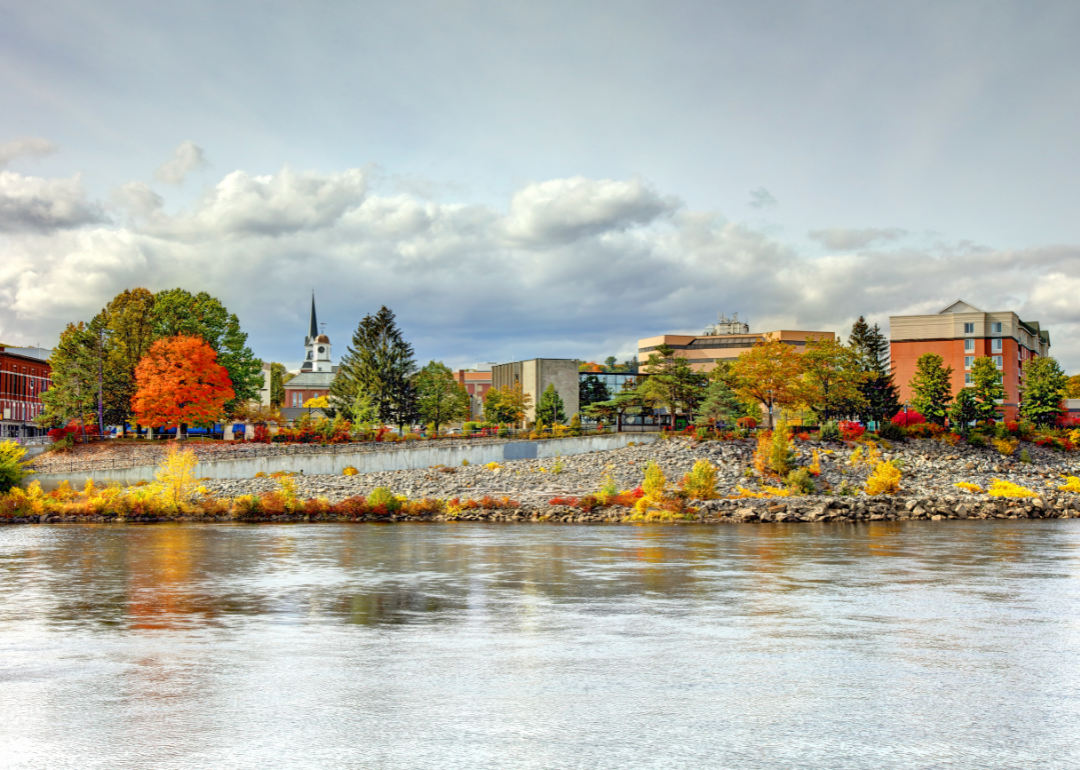
About
Aroostook County, known as “The County,” is Maine’s largest and most northern region, defined by wide-open landscapes, potato fields, and forested hills. Its communities value tradition and a slower pace of life, rooted in a strong sense of small-town connection.
The economy is anchored by agriculture, especially potato farming, along with forestry, manufacturing, and a growing renewable energy sector. Residents enjoy year-round recreation, from hiking and fishing to snowmobiling and skiing. With its mix of natural beauty, local industry, and enduring community spirit, Aroostook County offers a distinct way of life in northern Maine.
Where is Aroostook County?
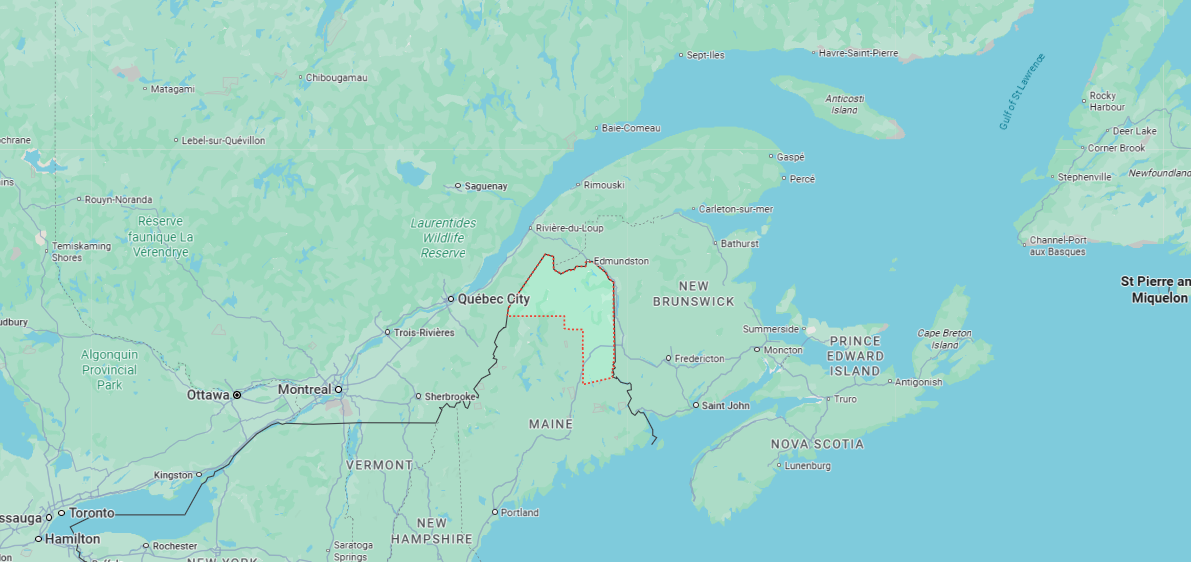
Aroostook County lies at the very top of Maine, where the U.S. meets Canada and the land rolls into endless fields of potatoes, forests, and rivers that cut through wide valleys. It’s reached by long drives on U.S. Route 1 or Interstate 95, where the miles stretch quiet and the sky opens big, unbroken.
Caribou and Presque Isle stand as hubs, stitched together by farming traditions, university life, and the hum of small industries. Fort Kent looks north across the St. John River, where French heritage lingers in accents, food, and festivals. The land carries a rugged patience, shaped by harsh winters and green summers, where time feels slower, measured by the seasons and the harvest.
#12. Androscoggin County, Maine
– Overall Rank: Not ranked
– Population: 111,532
– Median household income: $64,500
– Median home value: $211,800 (66% own)
– Median rent: $916 (34% rent)
– Top public schools: Durham Community School (grade A), Acadia Academy School (grade A minus), Tripp Middle School (grade B+)
– Top private schools: Saint Dominic Academy (grade A minus), Open Door Christian Academy (grade A minus), Calvary Christian Academy (grade C+)
– Top places: Greene (grade B minus), Auburn (grade C+), Lisbon Falls (grade C+)

About
Androscoggin County sits in south-central Maine, with Lewiston and Auburn serving as its cultural and economic hub. The county blends historic mill towns with vibrant neighborhoods, reflecting a mix of tradition and renewal.
Its economy is supported by healthcare, education, and manufacturing, with growing contributions from small businesses and services. Outdoor spaces along the Androscoggin River provide opportunities for recreation, while cultural venues and community events keep the area active year-round. With its balance of industry, heritage, and community life, Androscoggin County offers both stability and opportunity in Maine.
Where is Androscoggin County?
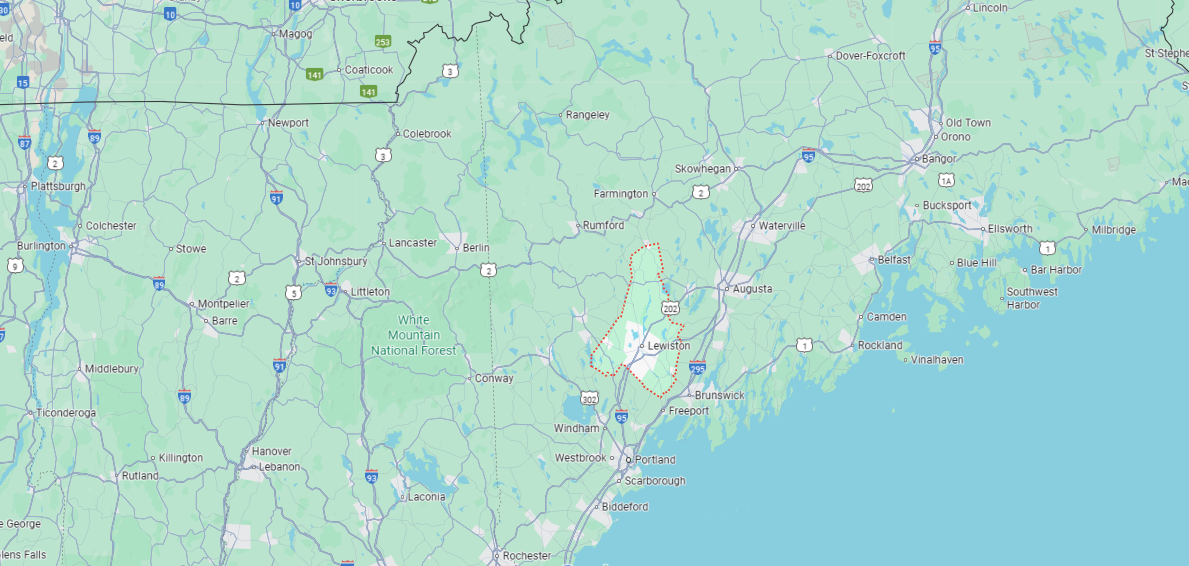
Androscoggin County sits in south-central Maine, where the Androscoggin River winds between mill towns, bridges, and wooded banks that carry echoes of industry and renewal. It’s reached along Interstate 95 or Route 202, where the road bends past lakes, farmland, and the steady course of the river itself.
Lewiston and Auburn form the county’s twin heart, linked by factories turned into lofts, college greens, and downtown streets where history still shows in brick and stone. Smaller towns like Lisbon and Turner stretch outward with farms, forests, and backroads leading to quiet ponds. Here, the current of the river sets the pace—steady, enduring, and rooted in both work and land.
#11. Washington County, Maine
– Overall Rank: Not ranked
– Population: 31,096
– Median household income: $51,669
– Median home value: $135,400 (78% own)
– Median rent: $687 (22% rent)
– Top public schools: Pembroke Elementary School (grade A minus), Lubec Consolidated School (grade A minus), Edmunds Consolidated School (grade B+)
– Top private schools: Washington Academy (grade B), Machias Valley Christian School (grade unavailable)
– Top places: Calais (grade B), Grand Lake Stream Township (grade B+), Roque Bluffs (grade B+)

About
Washington County stretches across Maine’s eastern coastline, where fishing villages, forests, and bays shape its Downeast identity. The area is known for its rugged beauty, small-town spirit, and deep ties to tradition.
Fishing and lobstering remain vital livelihoods, joined by blueberry farming, forestry, and seasonal tourism as key industries. Residents enjoy hiking trails, coastal waterways, and quiet outdoor spaces that highlight the region’s natural richness. With its enduring reliance on land and sea, Washington County captures the essence of coastal Maine living.
Where is Washington County?
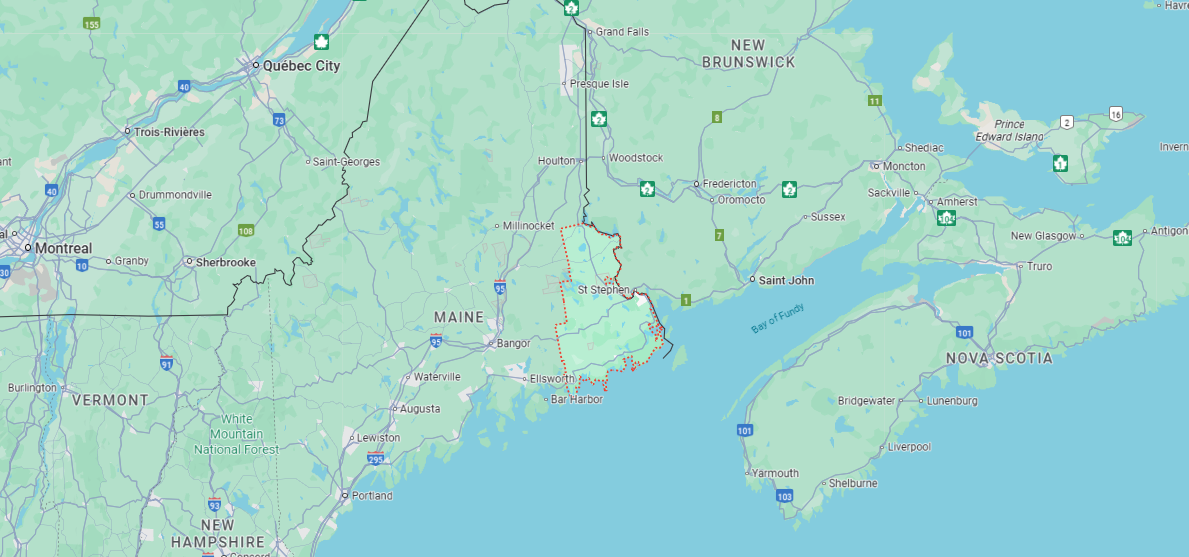
Washington County rests along Maine’s far eastern edge, where the first light of dawn touches the U.S. each morning on cliffs and rocky headlands. It’s reached by U.S. Route 1, winding past blueberry barrens, tidal rivers, and small harbors that open to the cold Atlantic.
Machias anchors the county with its university and historic streets, while Lubec looks east across a narrow channel to Canada, marked by lighthouses and tides that surge higher than most anywhere else. Fishing villages, wild coasts, and endless blueberry fields define the land. It’s a place where the rhythm of the ocean sets the measure of time—tides in, tides out, always steady, always near.
#10. Franklin County, Maine
– Overall Rank: Not ranked
– Population: 29,839
– Median household income: $56,890
– Median home value: $170,600 (76% own)
– Median rent: $752 (24% rent)
– Top public schools: Phillips Elementary School (grade B+), Stratton Elementary School (grade B+), Kingfield Elementary School (grade B minus)
– Top private schools: Carrabassett Valley Academy (grade A), New Life Christian School (grade unavailable)
– Top places: Farmington (grade B+), Jay (grade B minus), Chisholm (grade C+)
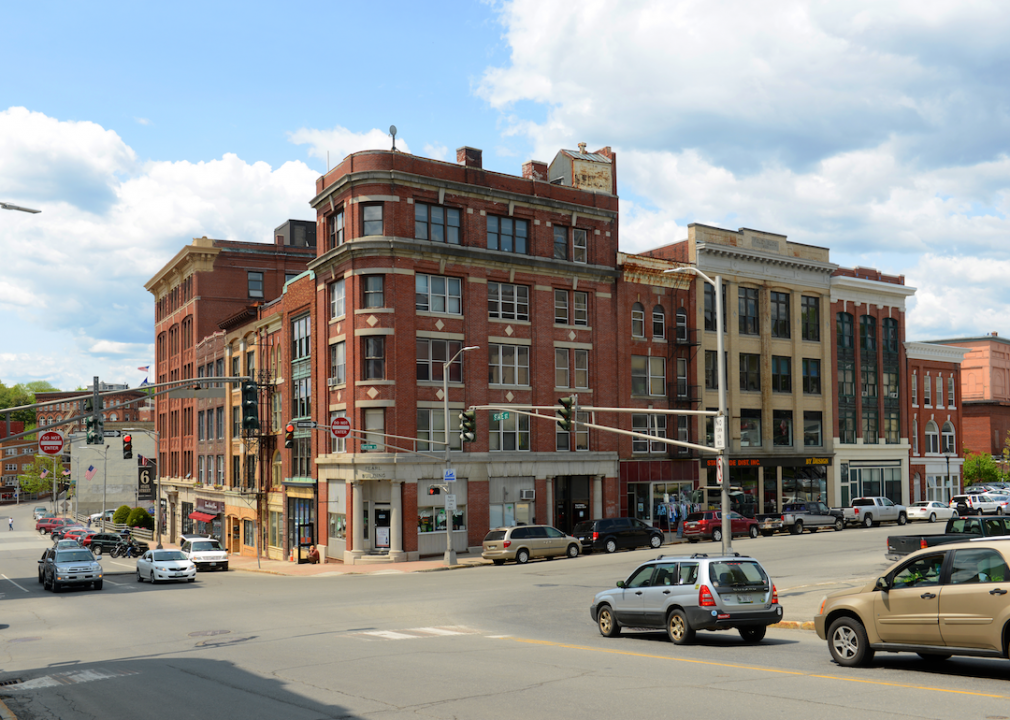
About
Franklin County lies in western Maine, where mountain ranges, lakes, and forestland create a landscape rich in outdoor opportunities. Home to the town of Farmington and the campus of the University of Maine at Farmington, the county balances education, community life, and natural beauty.
Local livelihoods draw from forestry, manufacturing, and small-scale farming, while education and healthcare provide steady employment. Tourism tied to skiing, hiking, and lake recreation also contributes to the region’s vitality. With its mix of natural resources, strong institutions, and year-round recreation, Franklin County offers a distinctive way of life in Maine’s western highlands.
Where is Franklin County?
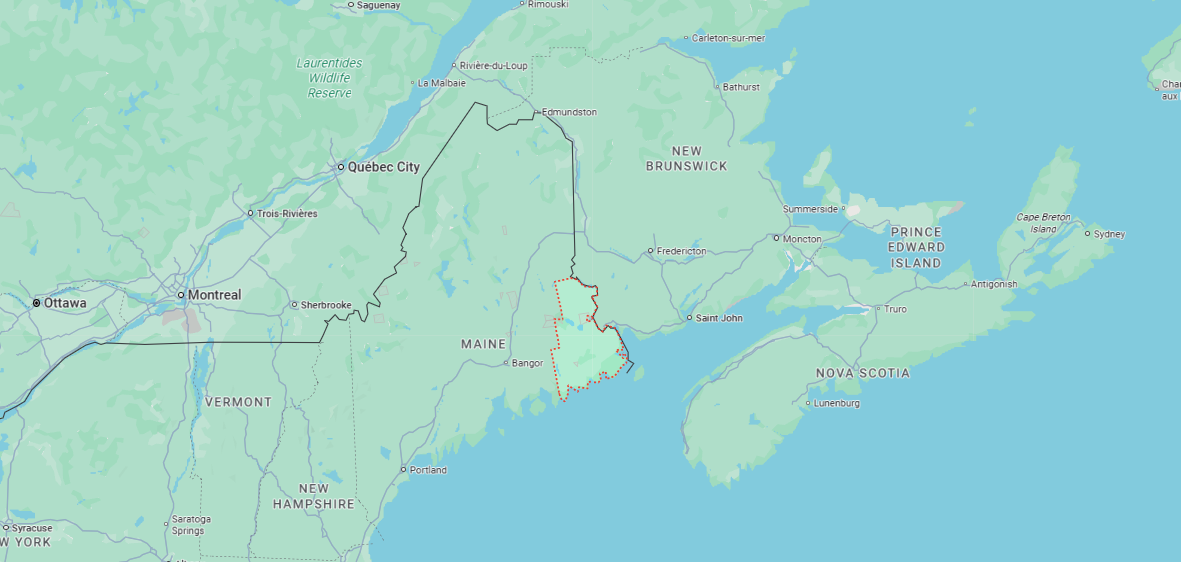
Franklin County stretches across western Maine, where the landscape rises into the foothills of the White Mountains and lakes lie tucked between long ridges of forest. It’s reached along Route 27 or Route 4, where winding roads climb past farm fields, rivers, and mountain valleys.
Farmington serves as the county’s center, alive with a university town’s rhythm and small-town streets. Rangeley pulls travelers northward with its chain of lakes and trails that lead to Saddleback Mountain. The land here speaks in seasons—bright foliage, deep snow, quiet waters—holding a balance between wilderness and community that feels both enduring and close to the earth.
#9. Penobscot County, Maine
– Overall Rank: Not ranked
– Population: 152,640
– Median household income: $59,438
– Median home value: $176,700 (70% own)
– Median rent: $932 (30% rent)
– Top public schools: George B. Weatherbee School (grade A), Orono Middle School (grade A), Reeds Brook Middle School (grade A)
– Top private schools: John Bapst Memorial High School (grade A), Lee Academy (grade B), Highview Christian Academy (grade B)
– Top places: Orono (grade A), Hampden (grade A), Veazie (grade A minus)
You may also like: How syringe exchanges in Maine reduce the spread of disease

About
Penobscot County sits at the center of Maine, with Bangor serving as its cultural and economic heart. The region blends urban amenities with easy access to rivers, lakes, and vast forestland, making it both a hub of activity and a gateway to the outdoors.
Industries here include healthcare, education, and retail, with Bangor International Airport and the University of Maine in Orono shaping growth and opportunity. Logging, paper production, and service-based businesses add to its economic base, while concerts, festivals, and recreation keep community life vibrant. With its mix of city energy and natural surroundings, Penobscot County remains a cornerstone of Maine.
Where is Penobscot County?
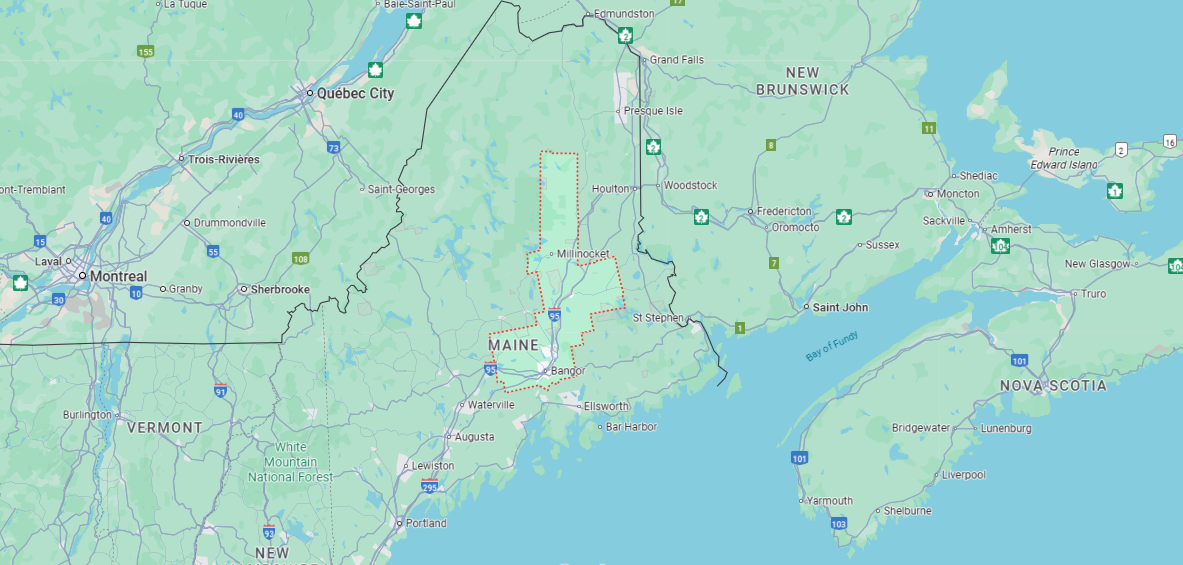
Penobscot County lies in the heart of Maine, where the Penobscot River runs wide and steady through forests, towns, and old mill sites that once drove the region’s growth. It’s reached along Interstate 95, crossing bridges into Bangor, the county’s largest city and cultural hub.
Bangor anchors the county with its riverfront, university, and historic streets, while smaller towns like Orono, Lincoln, and Old Town reflect both the pull of education and the tradition of logging. To the north and west, the land stretches toward Katahdin and the North Woods, where roads thin into trails and waterways. It’s a place where the river ties city and wilderness together, moving with a current that has shaped life here for generations.
#8. York County, Maine
– Overall Rank: Not ranked
– Population: 212,691
– Median household income: $79,743
– Median home value: $323,500 (75% own)
– Median rent: $1,166 (25% rent)
– Top public schools: Mildred L. Day School (grade A), Sea Road School (grade A), Middle School of the Kennebunks (grade A)
– Top private schools: Berwick Academy (grade A+), The New School (grade A minus), Thornton Academy (grade A minus)
– Top places: Kennebunk (grade A minus), Kittery (grade B+), York (grade B+)

About
York County, located in southern Maine, is the state’s oldest county and home to historic towns, coastal villages, and inland farmland. Communities like Biddeford, Sanford, and Kennebunk anchor the region, offering both economic strength and a strong sense of heritage.
Manufacturing, healthcare, and education serve as major employers, while tourism tied to its beaches and historic districts drives seasonal vitality. Agriculture and small businesses further contribute to local stability. With its blend of industry, coastline, and tradition, York County stands as a dynamic part of Maine’s identity.
Where is York County?
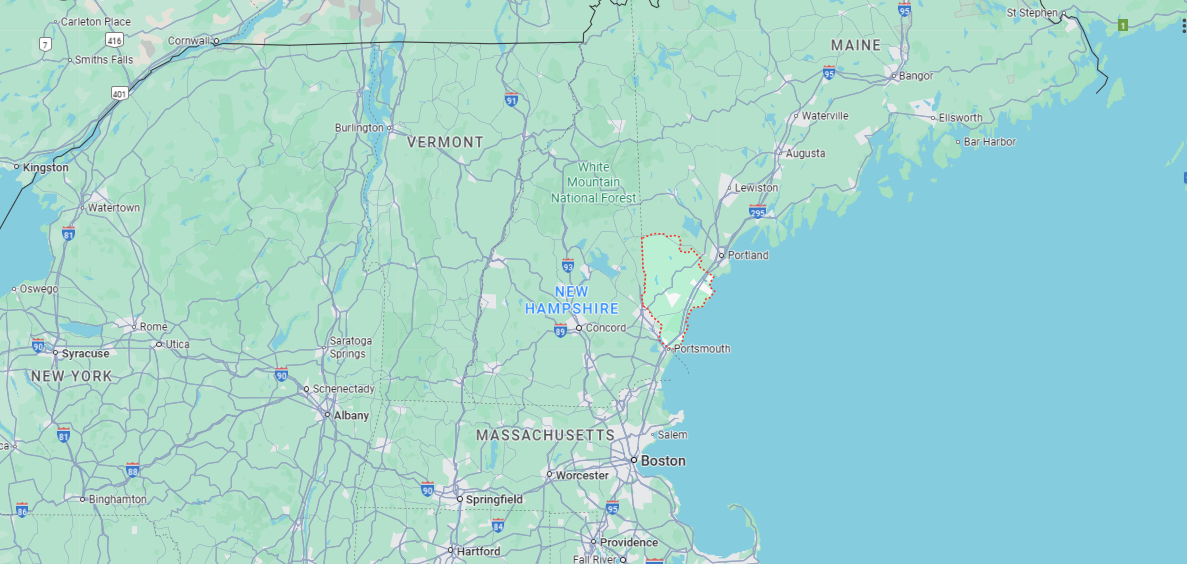
York County spans Maine’s southern tip, where rocky headlands and sandy beaches meet border towns and quiet inland farms. It’s reached along Interstate 95, the Maine Turnpike, carrying travelers past Kittery’s outlets, coastal harbors, and the rolling countryside beyond.
Sanford and Biddeford anchor the county inland, while seaside towns like Ogunquit, Kennebunkport, and York open to the Atlantic with working harbors and long stretches of sand. The land shifts quickly here—from salt marsh and surf to fields and lakes—holding both the bustle of summer tourism and the slower rhythm of year-round life.
#7. Waldo County, Maine
– Overall Rank: Not ranked
– Population: 39,772
– Median household income: $62,694
– Median home value: $210,600 (81% own)
– Median rent: $886 (19% rent)
– Top public schools: Lincolnville Central School (grade A), Samuel L. Wagner Middle School (grade B+), Leroy H. Smith School (grade B+)
– Top private schools: Ironwood Maine (grade B), Belfast Area Children’s Center (grade unavailable), South Liberty Baptist Academy (grade unavailable)
– Top places: Belfast (grade B), Lincolnville (grade A minus), Winterport (grade B+)
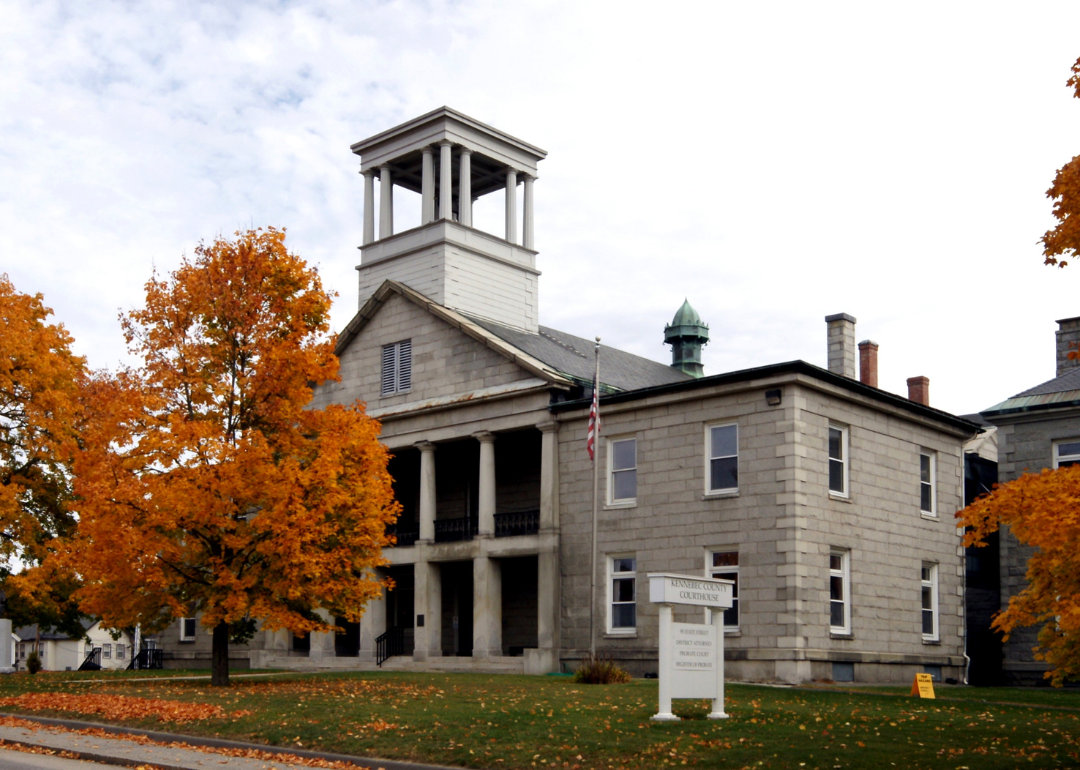
About
Waldo County lies along Maine’s midcoast, with Belfast serving as its historic and cultural center. The county combines small-town character, working waterfronts, and rural landscapes that stretch inland toward rolling hills and farmland.
Shipbuilding, lobster fishing, and agriculture remain important, while manufacturing, healthcare, and small businesses provide stability. Tourism tied to Belfast’s harbor, festivals, and coastal charm adds seasonal vitality. With its mix of maritime tradition, rural economy, and vibrant community life, Waldo County reflects the heart of Maine’s midcoast.
Where is Waldo County?
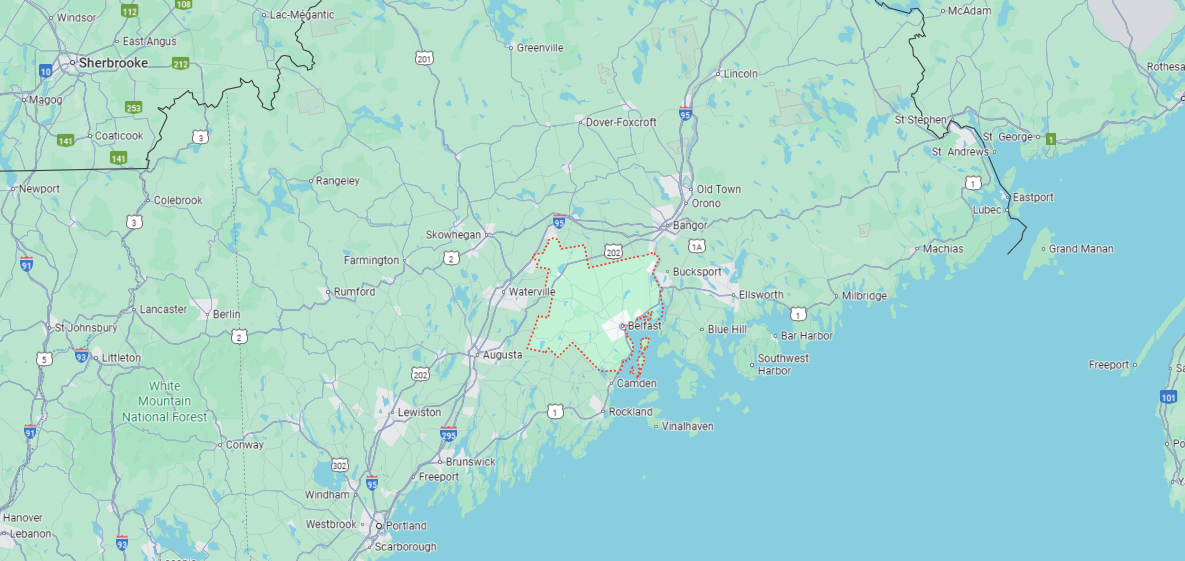
Waldo County rests along Maine’s midcoast, where Penobscot Bay reaches inland and rolling farmland rises behind the shoreline. It’s reached by U.S. Route 1, curving past harbors, coves, and bridges that connect sea to countryside.
Belfast anchors the county with its waterfront, shipyards, and a downtown alive with markets and old brick buildings. Inland towns like Unity and Brooks stretch across farmland, lakes, and forested hills, carrying a quieter rhythm. The county moves between tides and fields, where coastal winds and rural seasons shape life in equal measure.
#6. Kennebec County, Maine
– Overall Rank: 1,359
– Population: 124,003
– Median household income: $62,118
– Median home value: $198,300 (72% own)
– Median rent: $900 (28% rent)
– Top public schools: Williams Elementary School (grade A minus), James H. Bean School (grade A minus), Winthrop Grade School (grade A minus)
– Top private schools: Kents Hill School (grade A+), Temple Academy (grade B minus), Erskine Academy (grade B minus)
– Top places: Hallowell (grade A minus), Winslow (grade B+), Manchester (grade B)
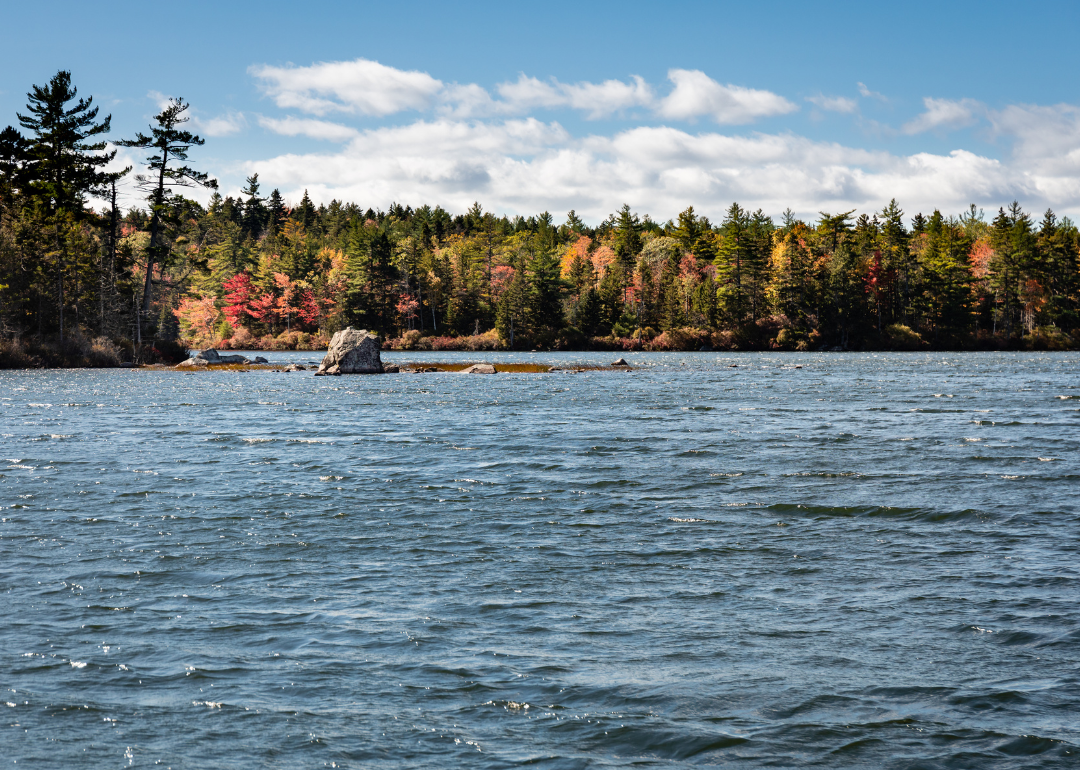
About
Kennebec County lies in central Maine, with Augusta—the state capital—serving as its political and cultural center. The county combines government activity, historic neighborhoods, and access to rivers and lakes that define the region.
Employment is supported by state government, healthcare, and education, while manufacturing and retail also play important roles. Tourism tied to the Kennebec River, historic sites, and outdoor recreation adds to its appeal. With its mix of civic importance, steady industries, and natural surroundings, Kennebec County remains a cornerstone of Maine.
Where is Kennebec County?
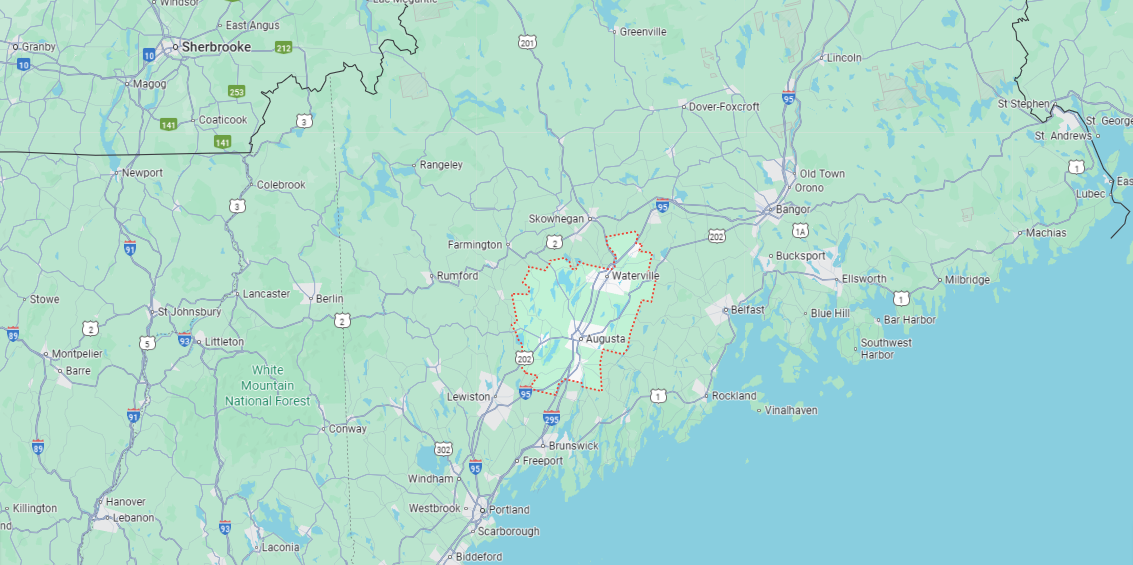
Kennebec County lies in central Maine, where the Kennebec River winds broad and steady through farmland, forest, and the state capital. It’s reached by Interstate 95 or Route 202, following the river’s bends past mill towns, lakes, and quiet backroads.
Augusta anchors the county with government, history, and a riverfront that links past to present, while Waterville and Gardiner carry the rhythm of colleges, arts, and old industrial roots. Beyond the towns, the land stretches into fields and woodlots dotted with ponds and streams. It’s a county shaped by its river—broad, enduring, and always at the center of life here.
#5. Hancock County, Maine
– Overall Rank: 936
– Population: 55,851
– Median household income: $64,149
– Median home value: $250,900 (79% own)
– Median rent: $949 (21% rent)
– Top public schools: Conners-Emerson School (grade A+), Mt. Desert Elementary School (grade A), Lamoine Consolidated School (grade A)
– Top private schools: George Stevens Academy (grade B+), Blue Hill Harbor School (grade C), The Bay School (grade unavailable)
– Top places: Bar Harbor (grade A), Ellsworth (grade B), Surry (grade B)

About
Hancock County stretches along Maine’s rugged coast, with Ellsworth as its commercial hub and Bar Harbor serving as a gateway to Acadia National Park. The county is defined by rocky shorelines, forested islands, and a strong maritime heritage.
Fishing and lobstering remain central livelihoods, while tourism driven by Acadia and the coastal villages brings seasonal vitality. Small businesses, healthcare, and education add stability to the local economy. With its blend of natural beauty, coastal industries, and thriving communities, Hancock County is one of Maine’s most iconic regions.
Where is Hancock County?
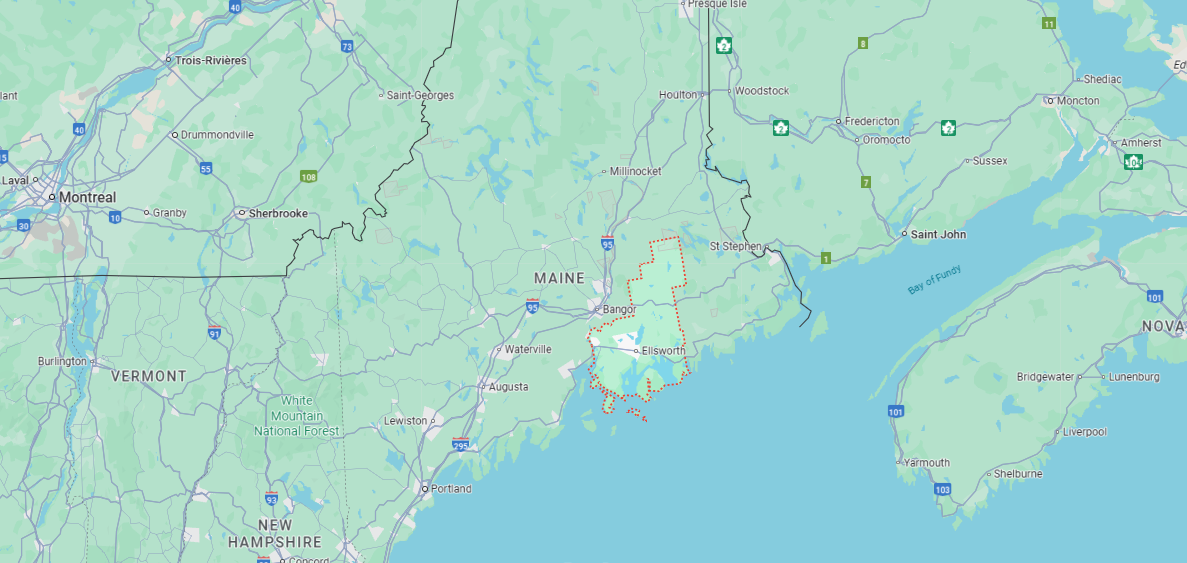
Hancock County spreads across Maine’s jagged midcoast, where peninsulas reach into the Atlantic and islands scatter offshore. It’s reached along U.S. Route 1, winding through spruce forests, tidal rivers, and harbors that rise and fall with the tide.
Ellsworth stands as the county’s hub, while Bar Harbor and Mount Desert Island open into Acadia National Park, where granite peaks meet ocean spray. Smaller towns like Blue Hill and Deer Isle hold quiet harbors, art traditions, and salt air that lingers in every street. The county moves with both sea and stone, a landscape of rugged edges and sheltered inlets that shape the rhythm of life.
#4. Sagadahoc County, Maine
– Overall Rank: 872
– Population: 36,868
– Median household income: $77,591
– Median home value: $268,600 (77% own)
– Median rent: $991 (23% rent)
– Top public schools: West Bath School (grade A), Bowdoin Central School (grade B+), Williams-Cone School (grade B+)
– Top private schools: Hyde School (grade A+), Chop Point School (grade B), Providence’s Merrymeeting Center (grade unavailable)
– Top places: West Bath (grade A minus), Woolwich (grade A minus), Topsham (grade B+)
You may also like: Counties with the lowest cost of living in Maine

About
Sagadahoc County, Maine’s smallest by land area, is centered around Bath, known as the “City of Ships.” The county’s identity is deeply tied to its maritime heritage, with the Kennebec River shaping both its history and its present.
Bath Iron Works anchors the economy through shipbuilding, while healthcare, education, and small businesses provide additional stability. Coastal towns and villages also benefit from tourism, with visitors drawn to historic districts, waterfronts, and nearby beaches. With its strong shipbuilding legacy and vibrant communities, Sagadahoc County reflects Maine’s coastal character on a smaller scale.
Where is Sagadahoc County?
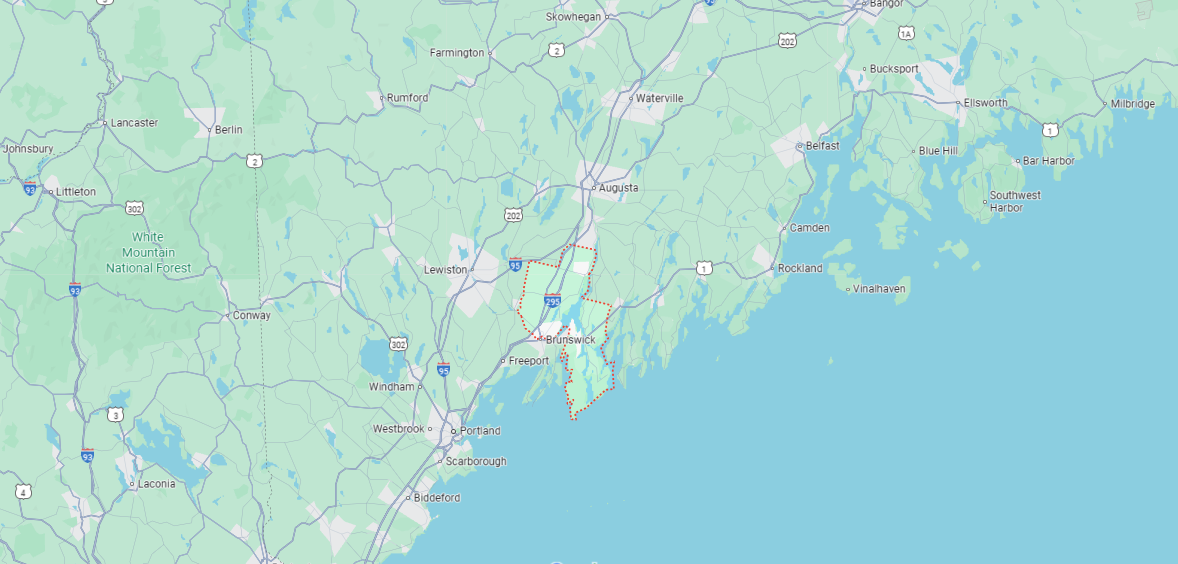
#3. Knox County, Maine
– Overall Rank: 832
– Population: 40,729
– Median household income: $68,904
– Median home value: $260,800 (79% own)
– Median rent: $1,027 (21% rent)
– Top public schools: Appleton Village School (grade A), Camden-Rockport Middle School (grade A minus), Camden Hills Regional High School (grade A minus)
– Top private schools: Watershed School (grade A), Ashwood Waldorf School (grade unavailable), Children’s House Montessori School (grade unavailable)
– Top places: Camden (grade A), Rockport (grade A minus), Rockland (grade B)

About
Knox County lies along Maine’s midcoast, with Rockland as its cultural and economic hub. The area is marked by working harbors, island communities, and a strong connection to Penobscot Bay.
Fishing, lobstering, and boatbuilding remain central, while tourism tied to Rockland’s art scene, festivals, and coastal attractions brings seasonal vitality. Small businesses, healthcare, and manufacturing add further support to the local economy. With its mix of maritime tradition, creative energy, and coastal charm, Knox County stands as a vibrant piece of Maine’s midcoast identity.
Where is Knox County?
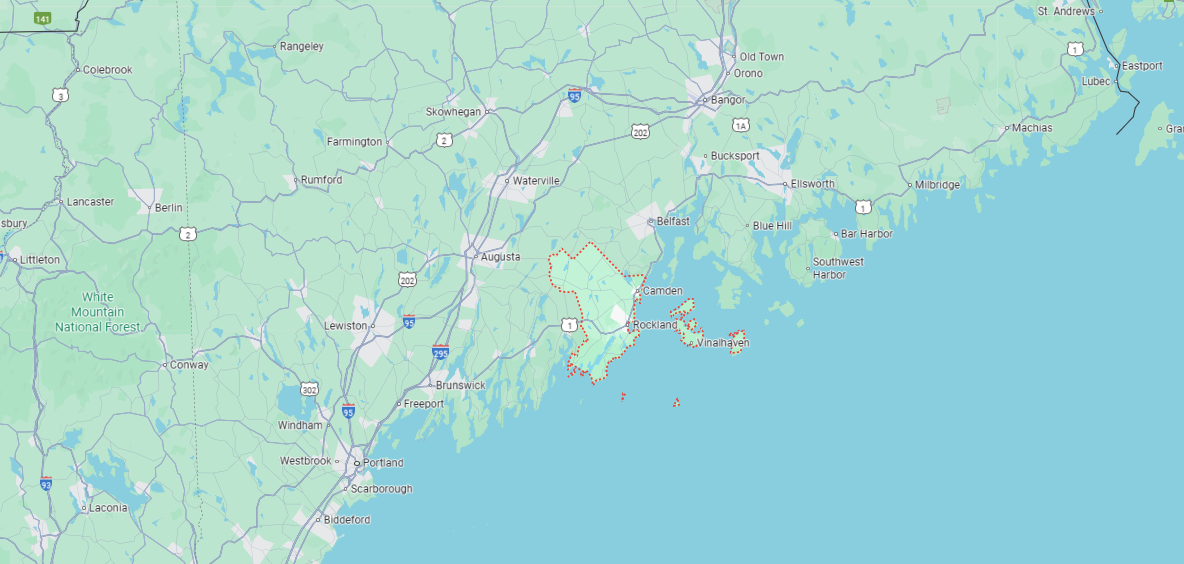
Knox County sits on Maine’s midcoast, where granite quarries, working harbors, and island-dotted waters define the landscape. It’s reached by U.S. Route 1, tracing the shoreline past villages, wharves, and stretches of open bay.
Rockland anchors the county with its waterfront, museums, and ferry lines that reach out to islands like Vinalhaven and North Haven. Camden rises just north, where mountains meet the sea, and Thomaston carries shipbuilding roots along the river. The county moves with the rhythm of tide and trade, where ocean and land have long shaped both work and community.
#2. Lincoln County, Maine
– Overall Rank: 657
– Population: 35,466
– Median household income: $69,638
– Median home value: $276,400 (83% own)
– Median rent: $930 (17% rent)
– Top public schools: Great Salt Bay Community School (grade A), Nobleboro Central School (grade A), Bristol Consolidated School (grade A)
– Top private schools: Lincoln Academy (grade A minus), Coastal Christian School (grade C+), Kieve-Wavus Education Inc (grade unavailable)
– Top places: Newcastle (grade A), South Bristol (grade A minus), Damariscotta (grade A minus)

About
Lincoln County stretches across Maine’s midcoast, where villages like Damariscotta and Wiscasset highlight a blend of history, waterfront charm, and rural landscapes. Its harbors, rivers, and farms give the county a balance between maritime life and inland traditions.
Lobstering, fishing, and boatbuilding remain vital, while agriculture and small businesses support local stability. Tourism tied to its historic districts, coastal scenery, and summer festivals brings seasonal energy. With its mix of natural beauty, working waterfronts, and welcoming communities, Lincoln County reflects the character of Maine’s midcoast.
Where is Lincoln County?
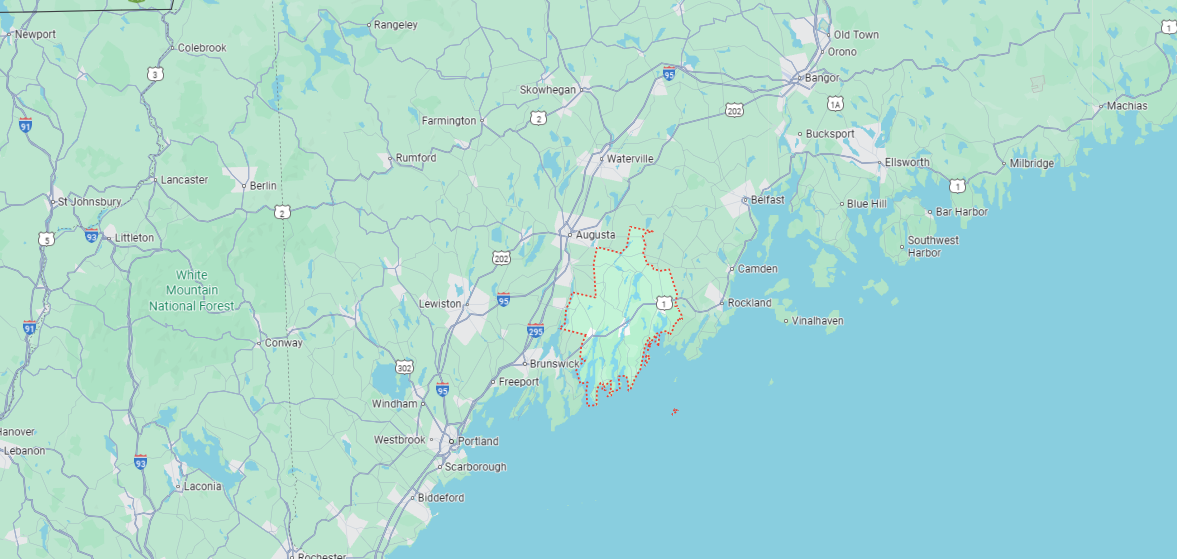
Lincoln County stretches along Maine’s midcoast, where narrow peninsulas reach into the Gulf of Maine and small harbors open to sheltered coves. It’s reached by U.S. Route 1, winding past inlets, tidal rivers, and village centers marked by white steeples and clapboard homes.
Wiscasset anchors the county with its historic streets and riverfront, while Boothbay Harbor draws boats and visitors to its sheltered waters. Inland, towns like Damariscotta and Newcastle follow the river’s bend, balancing farming roots with coastal ties. The county holds a rhythm of tides and seasons, where working waterfronts and quiet backroads shape daily life.
#1. Cumberland County, Maine
– Overall Rank: 282
– Population: 303,357
– Median household income: $87,710
– Median home value: $372,900 (70% own)
– Median rent: $1,389 (30% rent)
– Top public schools: Cape Elizabeth Middle School (grade A), Frank H. Harrison Middle School (grade A), Pond Cove Elementary School (grade A)
– Top private schools: Waynflete (grade A+), North Yarmouth Academy (grade A), Cheverus High School (grade A)
– Top places: Cape Elizabeth (grade A+), Falmouth (grade A+), Falmouth Foreside (grade A)

About
Cumberland County, home to Portland, is Maine’s most populous and economically dynamic region. The county blends a thriving urban center with coastal villages, islands, and inland communities that reflect both tradition and growth.
Portland’s port and food scene drive tourism and commerce, while healthcare, education, and finance provide steady employment. Manufacturing, shipping, and small businesses further strengthen the local economy. With its mix of cultural vitality, diverse industries, and scenic coastline, Cumberland County serves as Maine’s economic and cultural hub.
Where is Cumberland County?
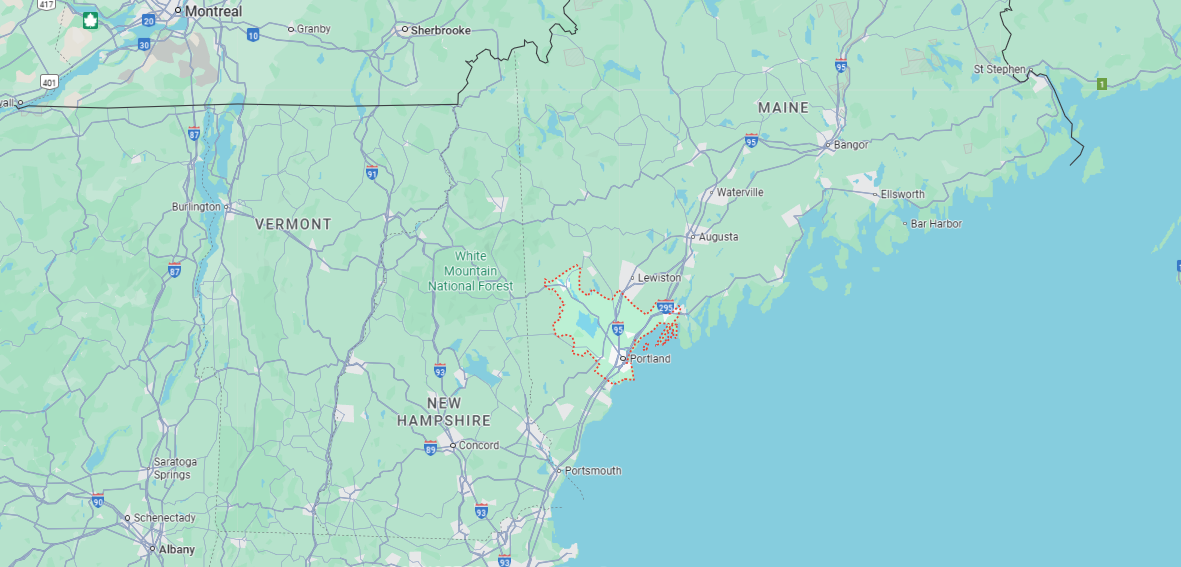
Cumberland County rests along Maine’s southern coast, where Casco Bay spreads wide with islands, lighthouses, and deep harbors. It’s reached by Interstate 295 and U.S. Route 1, carrying travelers past inlets, rivers, and the bustle of shoreline towns.
Portland anchors the county with its working waterfront, historic brick streets, and steady hum of arts, trade, and food. Beyond the city, places like Freeport, Yarmouth, and Brunswick follow the coastline, while Sebago Lake stretches inland with clear water and forested shores. The county moves between salt air and inland woods, where ocean and lake shape a balance of work, leisure, and community.
This story features data reporting and writing by Elena Cox and is part of a series utilizing data automation across 50 states.
